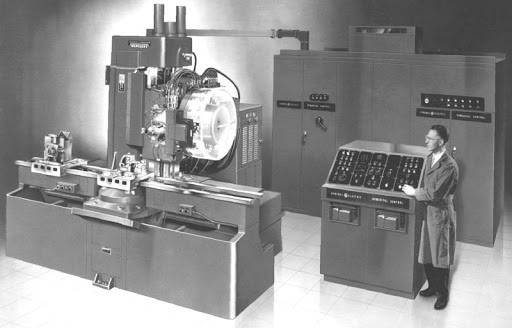CNC machining is a series of subtractive manufacturing techniques that use a computer-controlled process to manufacture parts by removing material from larger blocks. Since each cutting operation is controlled by a computer, multiple processing stations can manufacture parts based on the same design file at the same time, enabling high-precision end-use parts with extremely strict tolerances. CNC machines are also capable of cutting along multiple axes, allowing manufacturers to create complex shapes with relative ease. Although CNC machining is used in almost every industry in the manufacturing industry, it is a relatively new development in production methods.
CNC machine tools have a long history. Since the early days of automation, the technology has come a long way. Automation uses cams or perforated paper cards to help or guide the movement of tools. Today, this process is widely used to manufacture complex and sophisticated medical equipment components, aerospace components, high-performance electric motorcycle components, and many other cutting-edge applications. The following is a brief history of how the technology has evolved over time:

The History Of CNC Machining
1940-1950s
Early CNC machines in the 1940s and 1950s used punched tape, which was often used for telecommunications and data storage at the time. This technology is replaced by analog computing technology.
The world’s first electronic computer was born in 1946. 6 years later, in 1952, computer technology was applied to machine tools, and the first CNC machine tool was born in the United States. Since then, traditional machine tools have undergone qualitative changes.
In 1948, Parsons Corporation of the United States accepted the commission of the United States Air Force to develop processing equipment for prototypes of aircraft propeller blade profiles. Due to the complex shapes of the template and the high precision requirements, it is difficult to adapt to the general processing equipment, so the idea of computer-controlled machine tools was proposed.
In 1949, with the assistance of the MIT Servo Mechanism Research Office, the company began to research on CNC machine tools. In 1952, it successfully tested the first three-coordinate CNC milling machine converted from a large vertical profiling milling machine. It began formal production and was officially put into use in 1957. This is a major breakthrough in the development of manufacturing technology, marking the beginning of the era of CNC machining in the manufacturing field.
1967 – 1972
CNC machining is gaining more and more recognition worldwide. This is due to the development of Computer Aided Design (CAD) and Computer Aided Machining (CAM) in 1972. The inclusion of CAD and CAM in CNC machining has led to a huge development in CNC machining. However, neither is considered a standard part of the manufacturing process.
In 1968, Parsons received the first Joseph Mary Jacquard Memorial Award from the American CNC Association. In 1975, the Society of Manufacturing Engineers awarded him an honorary plaque, naming Parsons the “Father of the Second Industrial Revolution.”
1976 -1989
In 1976, 3D computer-aided design and computer-aided machining were incorporated into CNC machining. In 1989, CAD and CAM software-controlled machines became the industry standard for CNC machines.
Today’s CNC Industry

The development of CNC machine tools is unique. From simple machines controlled by punch cards to software-driven machines are mysterious. Due to evolution, CNC machining has become faster, more precise, and more accurate than NC and the first CNC machine.
The current development trend of CNC technology has the following aspects:
1.High speed, high precision, high efficiency and high reliability.
To improve the processing efficiency, the cutting speed and feed rate must be increased first, and the processing time must be shortened. To ensure the processing quality, the accuracy of the machine tool components must be improved, and reliability is the basic guarantee for the above goals. To this end, a high-performance numerical control device must be guaranteed.
2.Flexibility and integration.
In order to adapt to the development of manufacturing automation, to provide basic equipment for FMC, FMS and CIMS, the CNC system is required not only to complete the usual processing functions, but also to have automatic measurement, automatic loading and unloading, automatic tool change, automatic replacement of the spindle head (sometimes with Coordinate transformation), automatic error compensation, automatic diagnosis, line entry and networking functions, especially according to the different requirements of users, can be easily and flexibly configured and integrated.
3.Intelligent and networked.
The content of intelligence includes all aspects of the CNC system: in order to pursue intelligence in processing efficiency and processing quality, in order to improve the drive performance and the convenience of use and connection, simplify the programming and simplify the operation of the intelligence, and The content of intelligent diagnosis and intelligent monitoring is convenient for system diagnosis and maintenance.
4.Market adaptability
In order to adapt to the characteristics of multiple varieties and small batches of CNC machine tools, the CNC system must expand the batch as much as possible. For this reason, CNC system manufacturers should not only be able to produce universal and popular CNC systems, but also should be able to produce personalized CNC systems. The system, especially the design and production of popular CNC systems that can add proprietary functions by users themselves: This is the CNC system with the largest market share and the most competitive CNC system, which is also a manifestation of adaptability.
5.The development trend of the system structure: openness.
In order to meet the requirements of CNC line entry, networking, popularization, multi-variety, small batch, flexibility and rapid development of CNC, the most important development trend is the openness of the architecture, and the design and production of open CNC systems.


